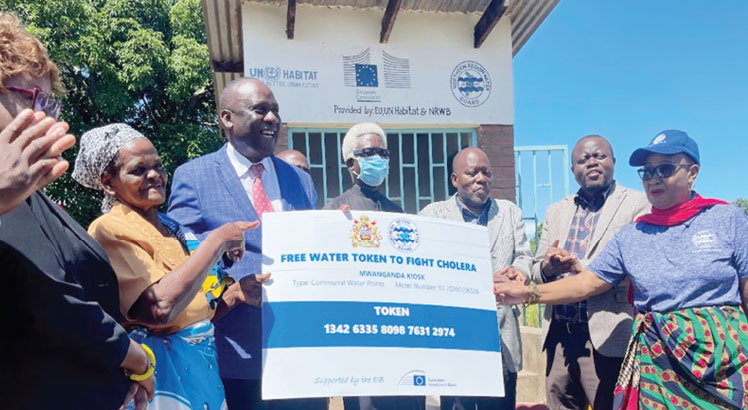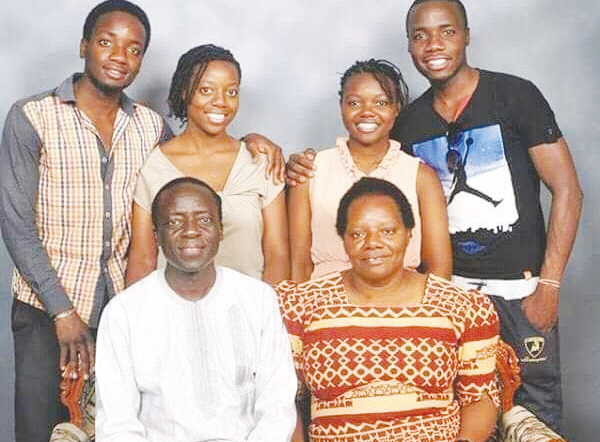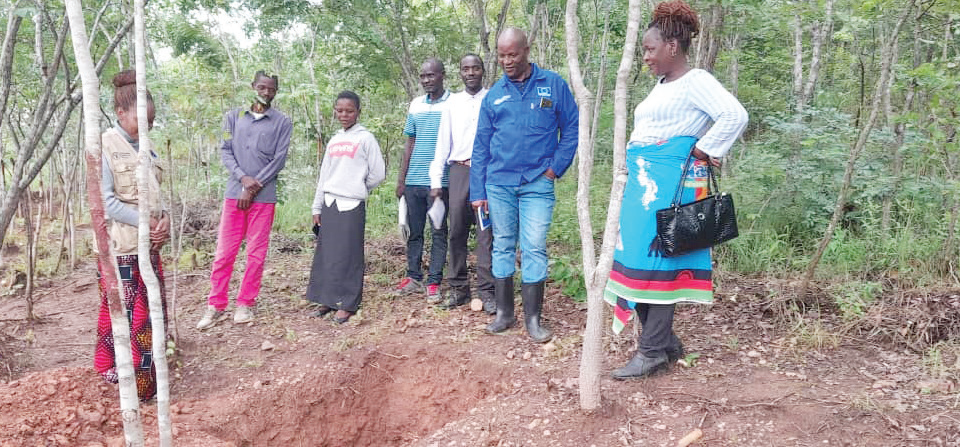Msuku’s rice tale
John Msuku would easily have been just another farmer trying too hard to eke out a living from growing rice at Hara in Karonga.
Instead, Msuku stands out of the crowd as a rare success story. He now takes care of his parents and siblings, has a modern house and has roped piped water into his village.
What is more, he has secured land on which he plans to build a house to rent out. So much has changed in his life and he is only 29.
Life wasn’t as rosy for Msuku until he and 11 others were picked in 2009 by the International Crops Research Institute for the Semi-Arid Tropics (ICRISAT) to try out better yielding certified seed.
The selected farmers formed Chigomezgo Seed Multiplication Group in 2009.
They were drilled in agricultural and management skills and given seed whose harvest is sold back to ICRISAT at a higher price.
At one point, Msuku grew one and a half hectares of rice that brought him 70 100kg bags which were converted into a cool K400 000 upon selling it to ICRISAT.
“People have profited from the certified seed, some have bought fishing trawls, built houses, secured carts and life is good for them. We eat very well, you cannot even notice that we are farmers,†said Witness Ngwira, president of the Hara Water Users Association and member of Chigomezgo Seed Multiplication Group.
Rice varieties that have been planted in the paddy fields all through history produce an average of two 100kg bags of rice from 0.1 of a hectare, but the certified seed fills up five 100kg bags from the same land size.
Apart from being disease-resistant, Ngwira said the certified seed matures quickly, available for harvesting after only 112 days, unlike the 145 days the common variety demands.
The farmers grow FAYA, Kilombero and Pusa 33 certified varieties which they alternate between two growing seasons.
Seed multipliers have also been given pigeon pea seed to multiply. Msuku has filled up about a hectare with pigeon peas and is expecting about thirty 50Kg bags. This will also be sold to ICRISAT so that other farmers can buy it for next season.
“Pigeon peas take about 6 months to mature. Apart from selling them, it’s good relish. We can also use the stems as firewood and the leaves can be burnt and used as a preservative,†said Msuku
Principal scientist (agronomy/seed systems) and ICRISAT country representative for Malawi, Dr Moses Siambi, said his organisation seeks to improve people’s lives using science.
Siambi said farmers’ success stories speak volumes about the contributions the organisation is making to people’s lives.
“We usually work with groundnuts and pigeon peas but this time Irish Aid asked us to try rice, so we asked farmers to form an association so that they can produce, package and sell the seed it to others,†said Siambi.
Elizabeth Higgins, Irish ambassador to Malawi, said her country’s aid focuses on improving people’s lives, especially in areas of livelihood security and reducing mother and child mortality by improving their nutrition.
“We have pumped in K2.2 million into ICRISAT and such kind of success stories are what the Irish taxpayers want to hear,†said Higgins.
“I have urged the seed producers to emphasise on quality. Myself coming from a farming background, I know that one cannot achieve quality without putting effort into it,†she added.
Asked how sustainable the project is, Higgins said is up to the farmers’ commitment and Ministry of Agriculture’s supporting policy.
Siambi added that he hopes the money farmers make from selling seed to other farmers will ensure that the project sustains itself until everyone is growing certified seed.
“I always insist that donations do not have to be big to make an impact, they just have to be tailored and you will hear success stories like we heard here in Karonga,†he said.
Siambi also said ICRISAT is working on an upland rice variety which will not require flooded conditions to grow
He said this is a positive step in meeting the increasing demand for rice.
But Ngwira said although better seed is available, it is difficult to convince local farmers to adopt it. Instead, he said, farmers cling to low-yielding varieties their parents taught them to grow.
Even if they adopt the high-yielding variety, rice farmers at Hara Rice Scheme lose out to vendors who buy the crop at give-away prices. During the harvest season, there are even tales of fishermen exchanging rice for fish or cassava.
Although Hara rice farmers formed an association that buys their rice, the group does not have the capital to buy all the produce.
“Government should help farmers sell their own rice to get the benefits that middlemen get. Rice from Karonga is being exported, but do the farmers get the benefits? â€said Siambi.
Hara Rice Scheme, which has 238 hectares, began in 1967 and was run by government until the early 2000s when farmers took over. The rice farmers are drawn from 11 villages surrounding the scheme and some have formed a cooperative society.
In 2009, with the aid of the European Union, a factory was built to help farmers add value to their rice. The factory buys up to 21 tonnes of rice which secretary of the cooperative Peter Msomphola says is too small.
“We have a small capital, just above K1 million. We lack transport to reach distant markets. We also lack opportunities for training,†said Msomphola.
Only a few focused farmers and lucky ones such as Msuku and Ngwira are able to earn real money from the waters and land of Karonga. The rest continue to fall victim to vendors who rip them off and grow low-yielding varieties, making Hara a potential tool for fighting food insecurity and yet underused.





